Console RPGs are rich, vibrant affairs stuffed with pots-ripe-for-the-smashing, baddies for the bashing, and detailed storylines for the unraveling.
MMORPGs take all that, and throw in some multiplayer collaboration on top for good measure.
So where does that leave mobile RPGs?
For Kabam, the San Francisco-based developer and publisher believed the app stores were bereft of a truely immersive role-playing experience.
Its answer is Spirit Lords, a F2P mobile multiplayer RPG set in the last human city of a world destroyed a thousand years ago by a war between the spirit realm and the physical universe.
Kabam's creative director, Daniel Erickson, was charged with bringing the game to life, drawing on his experiences working on Star Wars: The Old Republic and Dragon Age: Origins.
We caught up with him to find out how the team set about making an ambitious RPG on mobile.
PocketGamer.biz: Before Spirit Lords, was there anything that frustrated you or felt was missing in the current selection of mobile RPGs?
Daniel Erickson: I think the first thing that struck me was how many of the mobile RPGs lacked the sense of place and broad horizons that we expect from RPGs.
Story would often be an afterthought or end quickly after the tutorial and they would often immediately go wide with a ton of modes or variations instead of going deep with an ongoing adventure.
Story is central to Spirit Lords, and builds slowly throughout the game. Since F2P players often need an immediate hook to keep using an app, was that a risk?
Honestly, we just didn’t buy into the idea that a hook needs to be a gimmick or something flashy.
Spirit Lords is a more dedicated experience and our players seem to understand that. For us, the immediate hook was the quality and polish.
The most successful F2P mobile are based around very short sessions and often automatic gameplay. This is the exact opposite of a console RPG so how have you tried to fulfil both elements?
Although the most successful F2P mobile games allow very short sessions, the most dedicated players are playing them a great deal!
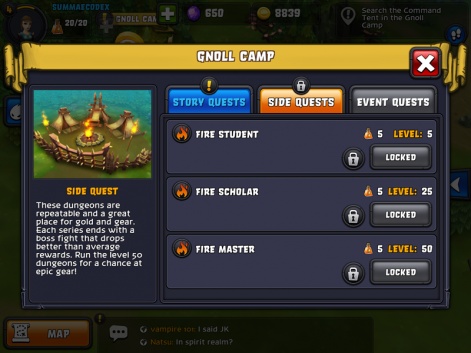
For Spirit Lords, we made sure there were quick check in and play mechanics (Spirit Missions) as well as meaty content that is good for sitting down and really digging into the game.
Spirit Lords is a dedicated experience and our players seem to understand that.Daniel Erickson
You've said you didn’t want to create a mobile RPG, but an RPG on mobile. How did you go about this, and do you think you were successful?
First of all, we didn’t start with looking at what was happening on mobile when deciding what we thought was important.
We considered mobile players as we would consider the players for any platform but it wasn’t primarily mobile RPGs that were calling out as our inspirations and spiritual guidance (though we are huge fans of Battleheart Legacy).
So far we’ve been happy with both the player and critical response to the game but these are still early days and there is still a lot to do!
Over 300,000 customization combinations are available to your hero throughout the game, and choice is often an important trope in this genre. How hard was that to realize on mobile?
The issues with huge amounts of customization, assets, economy, etc. are the same on mobile as they are anywhere else: asset creation and balancing.
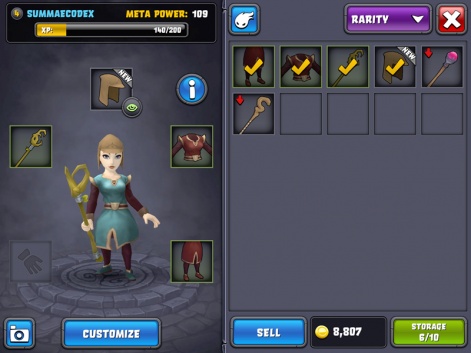
Luckily we’ve got an experienced team that’s full of people who’ve been through these challenges before.
What were the key technical challenges you had to overcome in terms of creating an online multiplayer experience on mobile?
This one is definitely still a work in progress.
We went through half a dozen different multiplayer systems before we found one we were happy with (sync times on cellphone [as opposed to wifi] can be nasty if done wrong) but we immediately saw issues when the game went live.
The great thing about a live game, though, is that you can keep polishing and see the results in real time.
Perhaps more importantly, how did you go about creating the kind of epic world expected from an RPG (both visually and in terms of gameplay) on a small screen?
One of the most important things about developing for the phone is to always make sure you’re starting there with your concepts, your poly counts, everything.
Details that might look great blown up on a monitor are meaningless shrunk down and if it runs slow there’s no point to those great graphics.
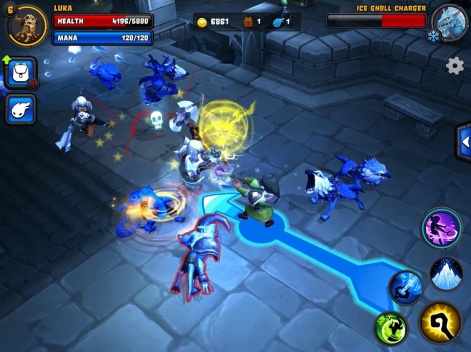
There is a huge amount of clever work done by the artists and our engineers to reuse things without it being obvious, to tile without looking tiled, etc. We actually end up using many of the same tricks people learned back in the earlier console days.
The game has been in different stages of conception and technical experimentation for about two years.Daniel Erickson
Can you give a rough idea of the size of the team and how long the project took?
Kabam RPG (the internal studio) is a mixed team that works on more than one project at once so it’s sometimes hard to quantify team size but it’s been as little as five and as many as forty at different times.
On the same note, the game has been in different stages of conception and technical experimentation for about two years. In that time it went from a simple prototype using placeholder assets through many, many iterations to develop the core mechanics and then the IP itself began development.
A lot of work went in to the game’s art and design – at what point did you decide to publish an art book for Spirit Lords and why?
Michael Dashow, Spirit Lords’ art director, pulled that one off single-handed. He got the inspiration about halfway through the project and just kept it going in the background, adding a new section every time we got additional art.
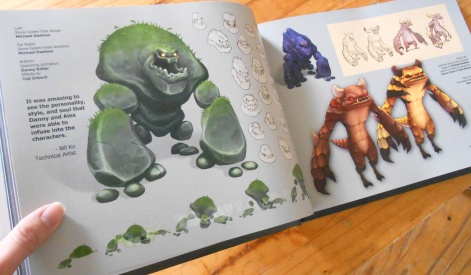
Were there any characters or ideas that didn't make the final cut?
So many! Some of them (additional classes, monsters, storylines) are still in the queue for the future and some of them (companions, talent trees, travelling the world in a giant land crab) had to be regretfully put aside as they just didn’t fit the game we were making.
Did you ever consider making Spirit Lords a premium game?
Nope. Spirit Lords was always intended to be a live experience that would continue to grow and expand, to tell new stories and send players on new adventures.
That requires working on the game long after launch which is something incredibly challenging to do for a premium title.
The game was in soft launch for quite a while. What did you learn from this?
We fully redesigned the ability system, the leveling curve, rewrote the story and tweaked or fully revamped almost anything you can imagine.
Soft launch is incredibly important as no idea that involves players ever can be fully tested until a real audience is holding your game.
Given the difference styles of playing and paying in Asia and the west, how have you tried to find a balance that will appeal to everyone?
Right now we’re focused on the core release markets and investigating what comes next.
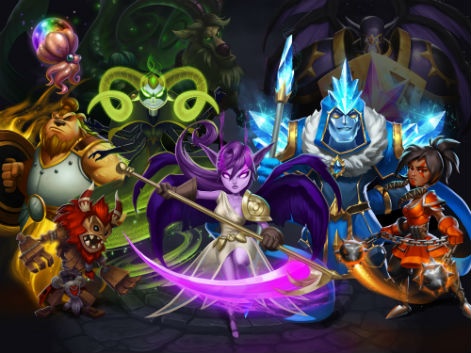
Which means we can’t talk much about Asia except to say that we respect the uniqueness of the market and want to make sure we’re addressing it correctly.
What part of the game are you most proud of?
I love every part of the game but I really adore the monster art, the combat design and the fact that the engineers managed to make this impossible little MMORPG fit in my pocket!
What's next for the franchise?
We’re hard at work on Act 2, improving multiplayer and overall player communication and planning for some huge player events.




















